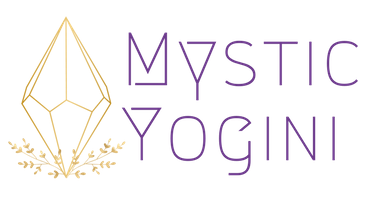After meditating almost daily for almost a decade I feel like I can tell you a little bit about meditation. I’ve meditated in various traditions and styles. The two longest styles that have stayed with me are a Zen Buddhist focus on the breath style and, of course, the meditation work in Kundalini Yoga.
During this time I have come to learn that while there is a vast difference in the style of meditations from the various traditions most meditations will fall under two categories, which I call passive or active. A passive meditation has a very different purpose than an active meditation, and often they have different components.
Passive Meditation
Aligns to the feminine energy, receiving, and surrender – awesome if you wish to cultivate that and gentleness, perfect if you need to process
Passive meditation seems to be what is most commonly taught. The meditations in this category tend to focus on witnessing, creating awareness and space within the mind, and calming the chatter in the mind. They offer the opportunity to connect to our breath, our body, our present moment deeper and deeper.
In my experience with passive meditations, I have found them to an extremely useful tool in creating inner silence and in unravelling the subconscious mind and its patterns. When I am desiring to learn more about my mind, thoughts, and inner workings I sit in silent meditation. When I am contemplating something – a shape, pattern, opportunity, idea, etc – I sit in silent meditation.
This is the space where I can watch myself without distraction. This is the place where I can come into my own silence and inner joy. It is literally the place where all time stops and connection to everything occurs. It is where I can hear my guidance loud and clear.
I also find when doing a silent sit I first have to process my day – or at least witness my process of my day – before I get to the good silent part.
Active Meditations
Aligns to the masculine energy, ambitious, goal setting – awesome if you wish to cultivate discipline, will, ambition
Active meditations are very different from passive meditations. The focus is not so much on creating space and witnessing but on creating fast and potent change in your mind, body and auric levels. I find most Kundalini Yoga meditations are very active. Active meditations tend to have more parts (mantra, mudra, position, visualization) and more steps to them.
I have found the focus in active meditations is very intense. These meditations work fast in one area of your life and we tend to do them for as long as we need before moving on to the next part of our life we wish to shift.
You still receive guidance and insight on the challenges in these ones but it comes very differently than in the passive meditations. As much as these meditations are focused so is the guidance we receive in doing them. For example, if you are doing a meditation for self-love a lot of the guidance and insights you will receive will be relating to that topic.
However, if you want to receive guidance or insights based on what you need rather than what you want a passive meditation is for you because it opens you to receive that.
Active meditations are what I use when there is something very particular I wish to change in my life and want to actively focus on. These are my go to when I want to witness change fast, and work through all the crap that goes along with it hard.
Both are as equally valid as the other. It simply changes the route you take to get to the same result. In my experience, both meditation styles can be really intense and life changing, just in different ways. It depends what you desire and where you are at in your life.
I notice in myself resistance to active meditations when life is changing fast and there’s a lot of chaos simply because I would rather process and witness when I am in sacred space. However, when life is calm and relaxed that’s when I will do my the heavy work of shifting intense things fast.
Pay attention and do what you are called to do. Again, neither is better than the other. They are both invaluable tools to have and to work with.
P.S.
One thing I’d like to add is that passive meditations seem to have a lot more adaptability to them than the active ones do because they don’t require as much focus or concentration. I can meditate as I ride my bike by constantly returning to the present moment and witnessing but I can’t do Kirtan Kriya for example, riding my bike.




